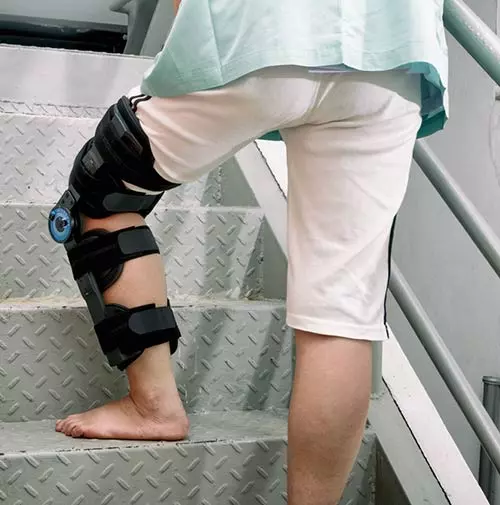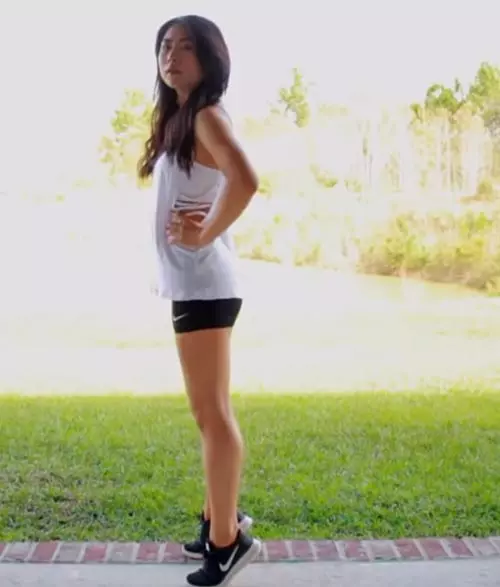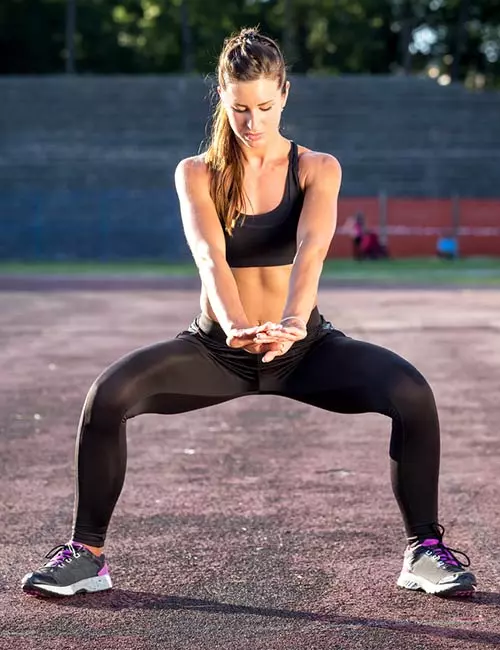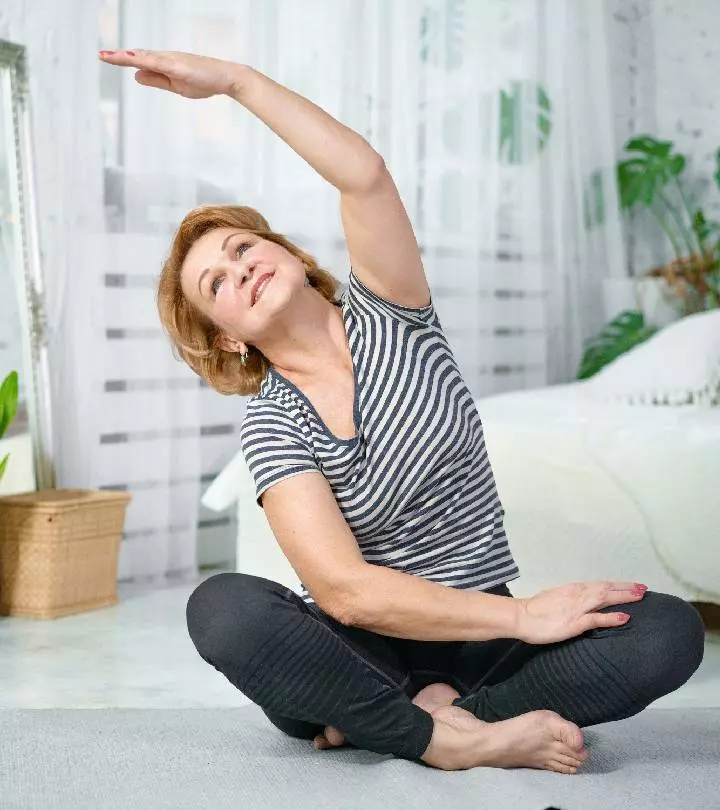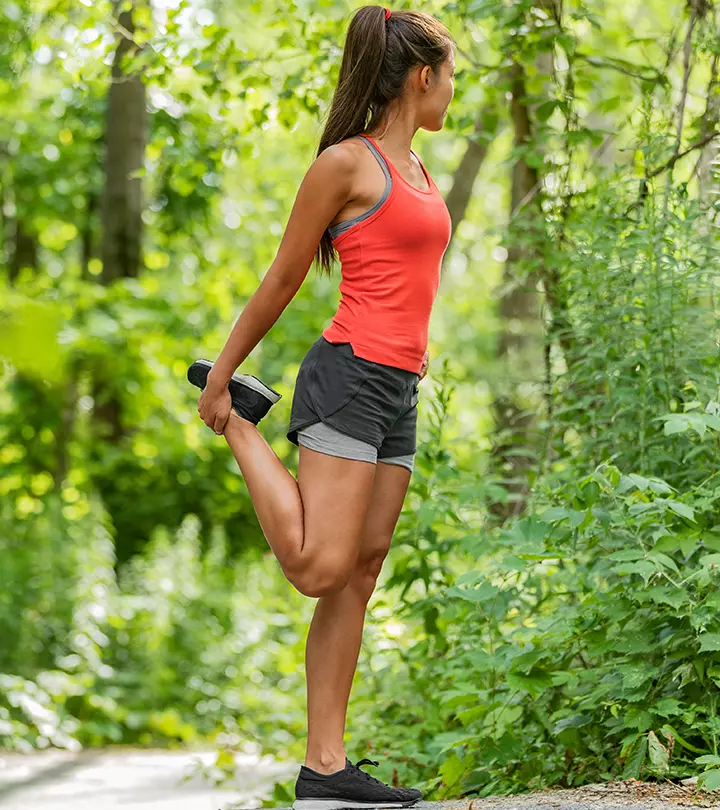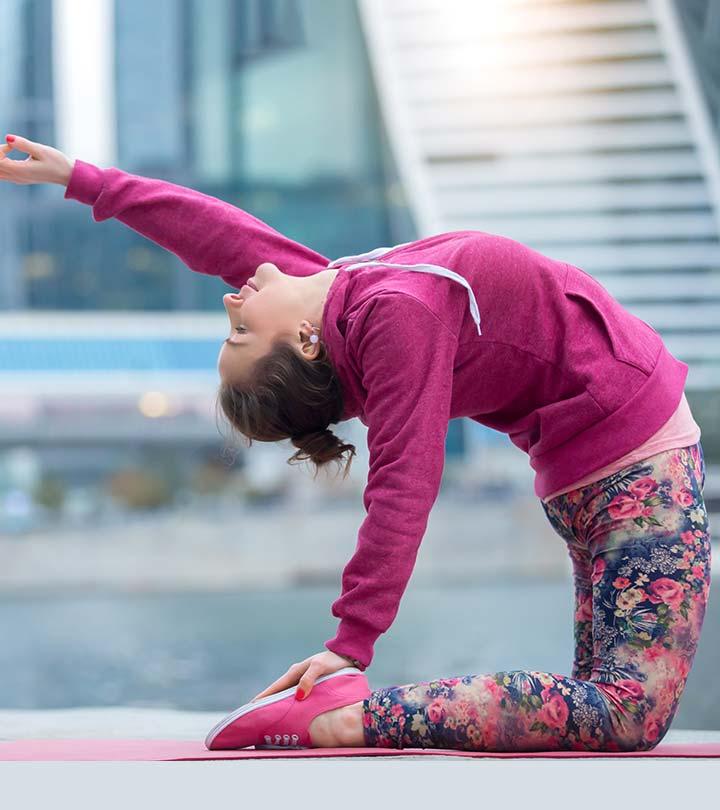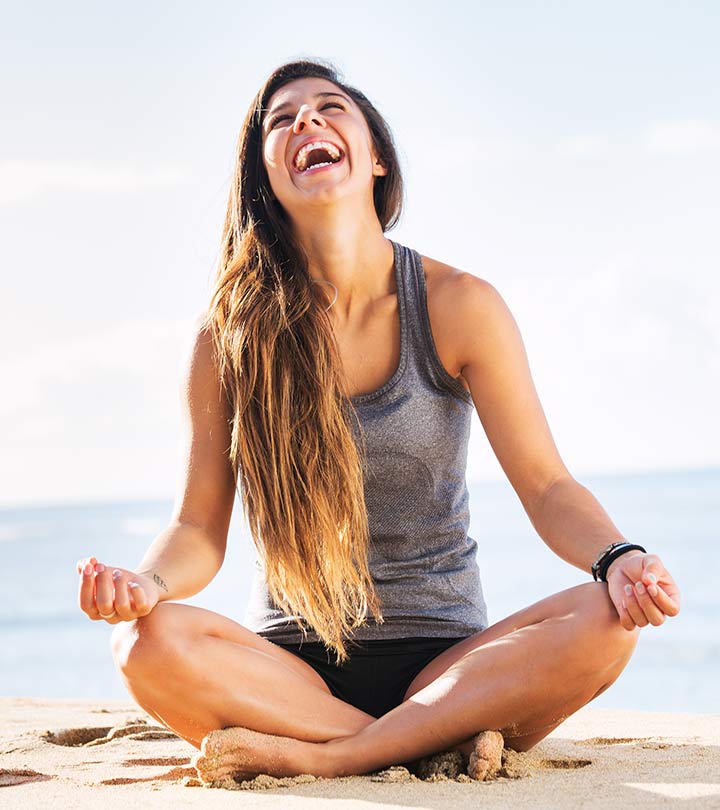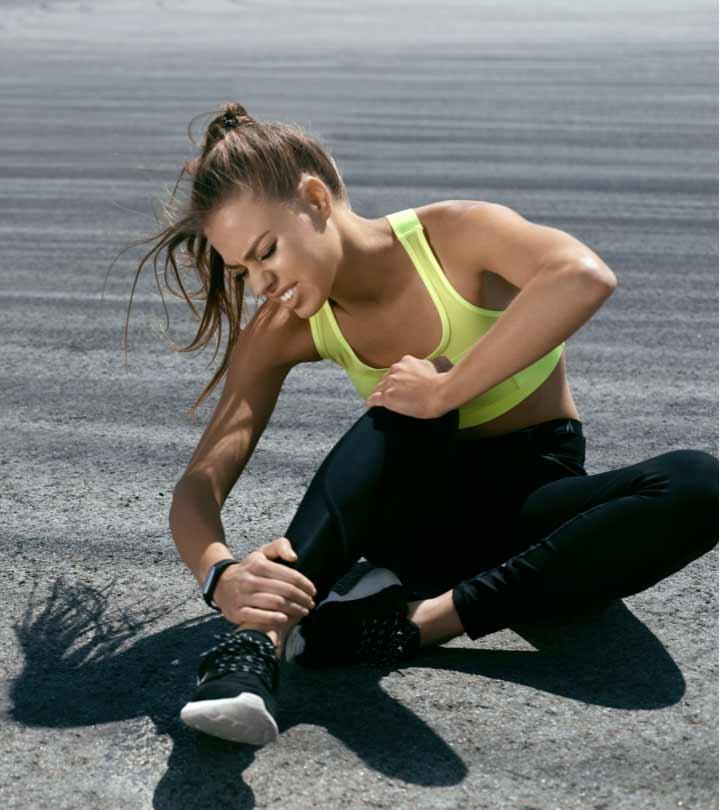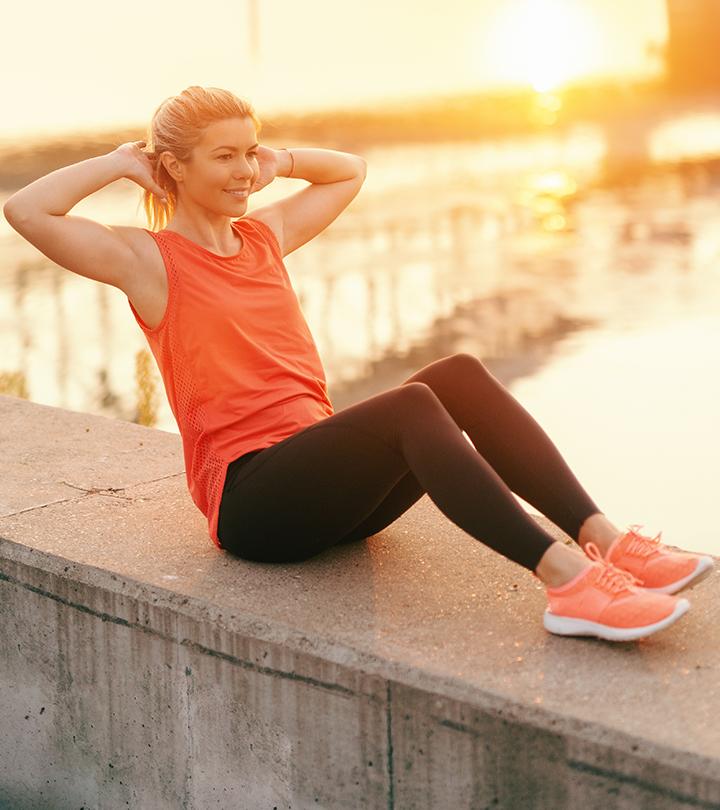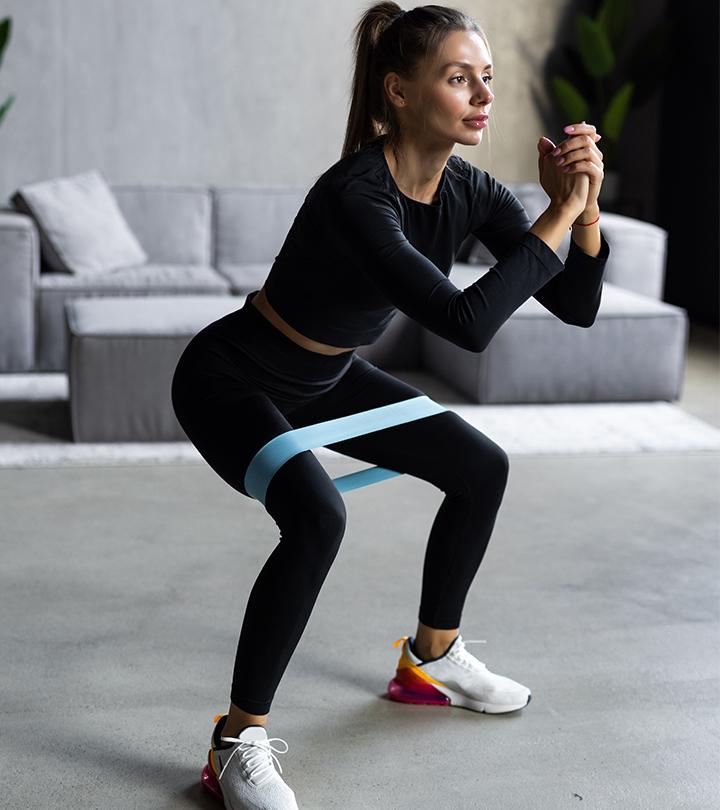15 Best Balance Exercises To Improve Stability And Strength
Lower the risk of injuries caused due to a lack of balance with some of the most effective exercises.

Image: Shutterstock
Balance exercises prevent sudden falls. They are important for all of us to avoid injury but are especially helpful for older adults or people with a head trauma or injury, an inner ear infection, or who have undergone surgery recently. Without proper balance, simple tasks like standing up, sitting down, walking, moving on uneven ground surfaces, or turning over can become difficult without tripping over and falling. That is why doing balance exercises is so important.
Start with 20 minutes of balance exercises per day, and stick to those prescribed by your physical therapist if you are seeing one. Start from the neck, then move to the torso, and lastly, the lower extremities. Make sure to include balance exercises on one leg in your regular exercise program.
Improving balance takes time and practice. Depending on the severity of your injury or infection, it may take a few weeks to several months to improve your balance. Be patient – you will soon start feeling better and doing things without any assistance.
According to a study published in the Journal Of Athletic Training, balance training can improve the strength and stability of ankles. The study included 39 participants with chronic ankle instability to determine the improvement of patient-reported outcomes after balance- and strength-training and control protocols. As the graph indicates, all participants, regardless of group, improved from the pre-test to the post-test.
Balance And Strength Training Improved Chronic Ankle Instability
Source: Balance- and Strength-Training Protocols to Improve Chronic Ankle Instability Deficits, Part II: Assessing Patient-Reported Outcome MeasuresThis study conducted in the US analyzed data from 1,012 respondents comprising older adults aged 65 years and above. It revealed that 72.5% of women aged 65 and older performed balance exercises, such as standing on their feet, compared to 62.3 percent of men in the same category. In addition, it also indicated that 4 out of 10 respondents in the study group perform balance exercises at least once on a daily or weekly basis.
Here are the 15 best exercises for improving balance, regardless of if you have had an injury. Scroll down to check them out!
 Balance Exercises
Balance Exercises- Frequency: Daily
- Benefits: Build core strength and improve overall flexibility.
- Equipment Needed: Dumbbells, yoga mat, stability ball.
- Space Required: Small area
- Assistance Required: Yes, for certain exercises
- Who Should Avoid: Anyone with orthopedic and balance disorders.
In This Article
15 Best Balance Exercises You Can Try At Home
Incorporating balance exercises and stability training into your exercise routine can greatly benefit your overall health and well-being. Before starting, you should know that balance exercises should always be done in progression. No one can do all balances well right away – they take time and practice, especially if you are recovering from an injury. And these exercises focus on building core strength, improving proprioception, and enhancing flexibility, all of which are crucial for injury prevention and rehabilitation.
Let’s start with the two kinds of balance exercises – static and dynamic. Static balance exercises involve holding a position, while dynamic balance exercises involve moving through a position while maintaining balance. Once you are confident about doing exercises of both categories with ease, you can start doing strength exercises to recover completely. You need to be confident in your balance before you can start weight bearing strength exercises. Without further ado, let’s begin!
Exercises To Increase Static Balance
1. Supine On Mat Or Bed
How To Do
- Lie down on a mat or your bed. Flex your knees and draw them close to your chest by wrapping your hands around your shins or behind your thighs.
- Roll over to your right, hold for two seconds, and then roll back to the starting position.
- Roll over to your left, hold for two seconds, and then roll back to the starting position.
Note: Do not do this exercise if you are recovering from knee surgery.
Sets And Reps – 2 sets of 5 reps
2. 4-Point Stance On Mat Or Bed
How To Do
- Lie down on a mat or your bed.
- Roll over to your right and get into a prone position on your stomach.
- Clench your fists, bend your elbows and knees, and use your arm strength to lift your upper body and then your torso.
- Get down on your hands and knees. Make sure your hands are under your shoulders, your knees are under your hips, your back is flat, your shoulders are pulled down, and your abdominals are pulled in. Hold this pose for 10 seconds.
- Lower your torso slowly and get into a resting pose.
- Repeat one more time if you are comfortable.
Note: You might need assistance initially from your physical therapist while you hold the pose for 10 seconds.
Sets And Reps – 2-3 sets of 10 seconds’ hold
3. 3-Point Stance On Mat Or Bed
How To Do
- Get down on your hands and knees (hands under shoulders, knees under hips, shoulders pulling down, back flat).
- Lift your left leg off the mat and extend it backward in line with your hip. Do not let your hips or shoulders wobble or your lower back arch. Brace your core by tightening your abdominals, pulling your shoulders down, and squeezing your glutes.
- Hold this pose for 5-10 seconds.
Sets And Reps – 3 sets of 3 reps
4. 2-Point Stance On Mat Or Bed (Bird Dog)
How To Do
- Get down on your hands and knees (hands under shoulders, knees under hips, shoulders pulling down, back flat).
- Slowly lift your left hand off the mat and extend it forward in line with your ear. Turn your thumb up to the ceiling. Keep your shoulder down and arm at shoulder height.
- Lift your right knee off the mat and extend your leg behind your hip. Pull your abdominals in, squeeze your glute, and do not let your lower back arch.
- Do not let your torso, shoulders, or hips lean or wobble. Brace your core by tightening your abdominals, pulling your shoulders down, and squeezing your glutes. Press down into the hand on the mat to stabilize your shoulder down.
- Hold this pose for 5-10 seconds.
Sets And Reps – 3 sets of 2 reps
 Quick Tip
Quick Tip5. Assisted Kneeling
How To Do
- Get down on your hands and knees (hands under shoulders, knees under hips, shoulders pulling down, back flat).
- Your physical therapist will place a gym ball in front of you. Place your right hand on it.
- Once you are comfortable, place your left hand on the ball and raise your torso slowly.
- Get into a kneeling position.
- Your physical therapist will help to stabilize your shoulders and back if needed. Pull your shoulders down, and abs in, and engage your back muscles.
- Hold this pose for 20 seconds.
Sets And Reps – 2 sets of 3 reps
6. Crawling
Caution: Do not do this exercise if you just had knee surgery or are not allowed to put any pressure on your knees.
How To Do
- Get down on your hands and knees (hands under shoulders, knees under hips, shoulders pulling down, back flat)
- Crawl forward and backward by moving your opposite hand and knee forward at the same time. Do not let your torso wobble or your hips or shoulders lift or move. Brace through your core. You might need assistance from your physical therapist in the beginning.
- 3. Crawl sideways as well, moving the opposite hand and arm and maintaining the same stabilization through your body.
Always move the opposite hand and knee at the same time and keep your shoulders over your wrists and knees under your hips. - Increase the distance gradually as you progress.
Sets And Reps – 2 sets of 2-4 crawls each way
7. Kneeling To Standing
How To Do
- Get down on your hands and knees (hands under shoulders, knees under hips, shoulders pulling down, back flat) in front of a stall bar or beside a chair. Make sure that the chair is stable and strong enough to take your weight. Your physical therapist will stand behind you.
- Hold one of the lower bars, one hand after another, place your right foot in front of you, and keep the right knee bent over your ankle. Or place one palm on the chair and get into a sitting lunge position.
- Use your body’s strength and assistance from your physical therapist to get into a standing position slowly. Try not to let your knees roll in or out – press into your feet and use your glutes to stand up. Keep your core tight, posture tall, and shoulders tall.
- Slowly lower into the kneeling position with the help of your physical therapist again, making sure your torso and knees don’t wobble, and repeat.
Sets And Reps – 2 sets of 2 reps
8. Standing Between Parallel Bars
How To Do
- Stand holding two parallel bars.
- Place one foot forward, keep your shoulders down and core tight, and sway from side to side.
- Do this 10 times and then sway backward and forward.
- Do this 10 times.
Sets And Reps – 3 sets of 3 reps
You must do these exercises for about 3-4 weeks. Consult with your doctor and physiotherapist before advancing to the next stage – dynamic balance exercises. Make sure you are confident in all of the static balance exercises and regular walking before progressing to these exercises.
Exercises To Increase Dynamic Balance
9. Stepping Over Small Objects
How To Do
- Your physical therapist will place small objects on the floor.
- Start walking and try stepping over those objects. You can take assistance from your physical therapist.
Sets And Reps – 3 sets of 1 rep
10. Walking In A Straight Line
How To Do
- Your physical therapist will stick arrows to direct your walking path.
- Step on those arrows and walk in a straight line after putting your hands across your chest.
- Keep your shoulders down and back, your abdominals tight, and posture tall.
Sets And Reps – 3 sets of 2 reps
11. Ascend And Descend The Staircase
How To Do
- Hold the side railing of a short staircase.
- Place your stronger leg up first and then place your weaker leg on the first step.
- Climb up the stairs, turn around and climb down with your weaker leg first and then the stronger leg.
- Keep your core tight and shoulders down. Make sure your knees track over the centers of your feet and do not roll in – use your glutes.
Sets And Reps – 2 sets of 3 reps each way (3 steps up then 3 steps down)
12. Small Vertical Jumps
How To Do
- Hold the back of a stable chair or a stall bar.
- Stand tall with your abdominals in and shoulders back.
- Bend your knees straight down.
- Hop and jump vertically.
- Land softly on the balls of your feet first and then the heels. Do not let your knees roll in.
Sets And Reps – 3 sets of 10 reps
 Quick Tip
Quick TipDo these exercises for another two weeks. Talk to your doctor and/physiotherapist before moving on to the next stage, where you will rebuild your strength. Here are a few exercises that you can start with.
Other Exercises To Do As You Progress
13. Split Squat
How To Do
- Stand tall with good posture. Keep your hands on your waist, chest open, shoulders down, core engaged, and look straight ahead. This is the starting position.
- Place your right foot in front of you.
- Bend both knees straight down to 90-degree angles, keeping your torso straight. Your thighs should be perpendicular to your shin bone.
- Make sure your knees are over your ankles, not forward over your toes. Make sure your knees track over the centers of your feet and do not roll in or out.
- Hold this pose for a moment and straighten your legs back up to the starting position. Press into your feet, squeeze your glutes and thighs, and do not let your torso, knees, or ankles wobble.
- Now, place your left foot in front of you and repeat.
Tip: You can do weighted split squat by holding a 5-pound dumbbell in each hand once you have mastered the exercise without weights.
Sets And Reps – 3 sets of 10 reps on each leg
14. Calf Raises
How To Do
- Stand tall with good posture behind a chair and lightly hold the backrest on the chair. Try not to push your weight into the chair.
- Lift both the heels off the floor, rising onto the balls of your feet.
- Make sure you have weight across all 5 toes and your ankles are not rolling in or out. Keep your legs straight.
- Lower your heels down with control, making sure your knees don’t bend and your ankles do not roll in or out.
Sets And Reps – 3 sets of 10 reps
15. Sumo Squat
How To Do
- Stand tall with your feet slightly wider than shoulder-width apart.
- Keep your shoulders down, chin up, spine long, and core engaged.
- Turn your legs out from your hips – squeeze your glutes and feel your inner thighs rotating forward and outer thighs rotating back. Make sure you have weight on your big toe, little toe, and heel, and do not roll in on your feet.
- Bend your knees down, making sure your knees align over your middle toes, and do not roll in. Bend until your thighs are parallel to the floor if you can do so pain-free. Make sure your knees don’t point past your toes; keep your knees aligned over your ankles.
- Hold this pose for 3 seconds.
- Straighten your legs to stand up, squeezing your glutes and inner thighs.
Sets And Reps – 3 sets of 10 reps
Infographic: Falls Among The Elderly
In older adults, balance issues are among the most common reasons for seeking medical care. But they can be corrected through certain interventions, including the incorporation of a few balance exercises into one’s lifestyle.
In the infographic below, learn more about such issues with balance in the elderly, a few facts about falls, and what you can do to prevent them. Illustration: StyleCraze Design Team
Balance exercises may help you improve stability and avoid sudden falls and injuries. Elderly people who might need help walking, sitting, or standing on their own, or people with vertigo, inner ear infections, or any prior head trauma or injury, can benefit from these exercises. Static balance exercises help you hold a position while dynamic balance exercises help you keep the balance during movement. By engaging in functional fitness exercises that challenge your body’s balance and stability, you can develop better body control and coordination. Pick one as per your requirement, practice it regularly, and give it some time and effort before you start feeling the difference.
Frequently Asked Questions
Is plank a balance exercise?
Yes. Plank is an isometrici A type of resistance exercise in which a specific muscle or group of muscles are contracted without moving any joints. core exercise that works the glutes and hamstrings and is crucial for improving balance and coordination.
What medications cause balance issues?
Antibiotics, anticonvulsantsi A type of medication used to treat or prevent seizures or convulsions by regulating the brain's abnormal electrical activity. , antidepressants, anti-hypertensivesi A type of medication used to treat high blood pressure by widening the blood vessels or removing extra fluid from the body. , and antipsychoticsi A type of medication used to treat psychosis, schizophrenia, and other types of psychotic disorders. may cause balance problems such as dizziness and vertigoi A sudden spinning sensation without any movement due to ear infections, muscle weakness, or low blood pressure. (1).
How can I improve my balance after 70?
Do simple exercises to improve your balance. These simple exercises are head rotation, trying to walk in a straight line, foot taps, single-leg stand, and walking regularly.
Can loss of balance be restored?
Yes, guided physical therapy and regular balance-maintaining exercises can help improve balance. However, if the loss of balance is due to nerve damage it can take a very long time to repair.
At what age does balance decline?
Around the age of 50 people may start to experience fatigue, joint discomfort, and other health issues which can impact their ability to maintain balance.
What vitamins and supplements are good for balance problems?
A balanced diet with Vitamin D supplements is highly effective in curing body balance problems (2).
Why do seniors lose their balance?
Certain metabolic conditions such as hypertension, diabetes, vision issues, or ear infections may lead to loss of balance in old age (3), (4), (5).
Which daily activity can improve your balance?
Activities that involved footwork and keep you moving are all good for maintaining balance. Trying light sports like badminton, and ball-balancing race to see improve you your balance. If you suffer from severe balance problems, it is safer to start slow.
Key Takeaways
- Always start with static balance exercises (holding a position), then move to dynamic balance exercises (moving through a balance involving balance) and then proceed with strength exercises once you are confident.
- If you are recovering from an injury or undergoing physical therapy, make sure to do these exercises under the supervision of your physical therapist.
- If you had recent knee surgery, avoid leg exercises that put pressure (too much weight) on your knees or involve bending your knees. Follow physical therapy guidelines and progressions closely.

Image: Stable Diffusion/StyleCraze Design Team
Learn how to improve your athletic performance with body balance enhancing exercises. Watch this video for tips and tricks to help you stay sure-footed every step of the way. Hit play now!
References
Articles on StyleCraze are backed by verified information from peer-reviewed and academic research papers, reputed organizations, research institutions, and medical associations to ensure accuracy and relevance. Read our editorial policy to learn more.
- Vertigo/dizziness as a Drugs’ adverse reaction
https://www.ncbi.nlm.nih.gov/pmc/articles/PMC3853661/ - The relation between vitamin D and postural balance according to clinical tests and tetrax posturography
https://www.ncbi.nlm.nih.gov/pmc/articles/PMC4868226/ - Impact of Diabetic Complications on Balance and Falls: Contribution of the Vestibular System
https://www.ncbi.nlm.nih.gov/pmc/articles/PMC4774386/#:~:text=Damage%20to%20the%20inner%20ear,otolith%20organs%20and%20semicircular%20canals - Is hypertension a risk factor for poor balance control in elderly adults?
https://www.ncbi.nlm.nih.gov/pmc/articles/PMC4395739/#:~:text=Hypertension%20can%20also%20negatively%20affect,maintain%20a%20stable%20posture10 - Treatment of Vestibular Disorders (Inner Ear Balance Problems): How Does Your Physical Therapist Treat Dizziness Related to Inner Ear Balance Problems?
https://www.ncbi.nlm.nih.gov/pmc/articles/PMC8920002/
Read full bio of Gabbi Berkow
Read full bio of Ravi Teja Tadimalla
Read full bio of Moksha Gandhi














